Projercts
Automated Salamander Identification Using Spot Patterns
Automated Salamander Identification Using Spot Patterns
Tal Saphar
The Salamandra infraimmaculata, commonly known as the Near Eastern fire salamander, has been assigned the conservation status of “Near Threatened” on the IUCN Red List of Threatened Species. The Society for the Protection of Nature in Israel, in collaboration with Yarok Balev NGO, works to track Salamander population size by identifying individual salamanders by human experts based on digital images collected during annual winter monitoring projects. While this process is currently being done manually, we propose the development of an automated algorithm to process the images so that the identification of individual salamanders can take place without human intervention.
The main idea behind our approach is to treat the spot pattern on the salamanders as a type of identifying fingerprint. To implement our algorithm, we developed a multi-step process that involves several fundamental procedures. Initially, we perform image segmentation, which enables us to identify the salamander and its unique spots.
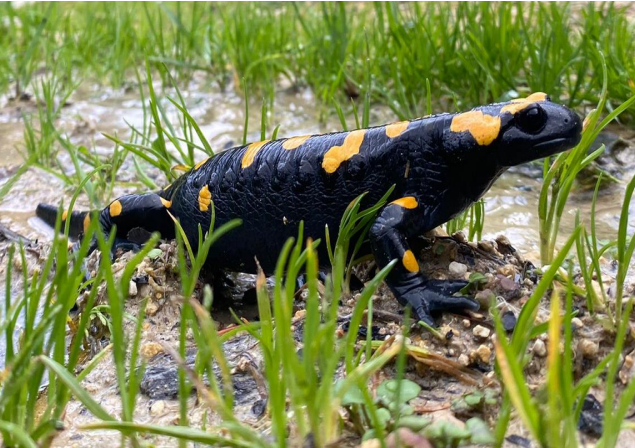

We generate a straightened image of the salamander using SVD and the Dijkstra algorithm to transform the pixels of the salamander, preserving the distance of each pixel from the head of the salamander and its skeleton. Then spatial and geometric features from the salamander’s spots are gathered, including size, shape, and center position and we construct a function to estimate the location of matching spots based on geometric features. We then used a neural network to determine the level of match between spots from different images. To do this we used a triplet loss function, training the net with examples of matching spots of the same salamander and non matching spots. Finally we use the output of the neural network to establish whether the salamander is the same or different according to how well the spot pattern fits previous images of salamanders.

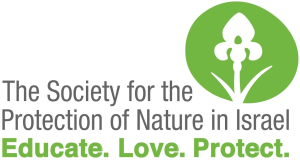
Gazelles in Space: Developing AI and remote-sensing tools to assess demography and spatial distribution patterns of medium-sized species, using Very High-Resolution (VHR) satellite images.
Ravit Ben Shoushan
Assessing the trends and dynamics of populations in nature is of high importance for biodiversity monitoring and the support of endangered species conservation efforts. The (commercially) recently-opened access to satellite-based earth-observation images at a very-high spatial resolution (<0.5m), enables to monitor very large areas at once. Though previous research works demonstrated the advantages of detecting wildlife from satellite images, these works are limited to large-sized mammals with high contrast to their surroundings. Reliable feature extraction of smaller animals (i.e., ≤9 pixels in size, in satellite image with spatial resolution of 0.3m) from complex backgrounds, remains a challenging task.
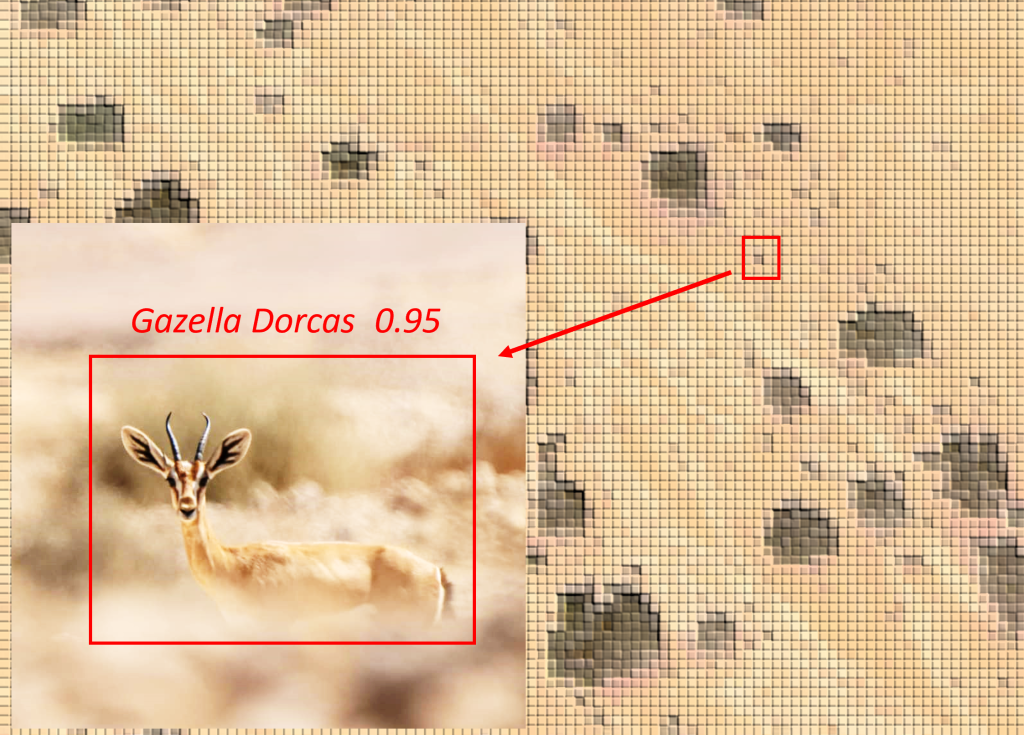
Aiming to leverage the advantages of using the multi-spectral VHR satellite images (available in high temporal resolution), to detect and classify medium to small sized mammals in large areas, the proposed approach uses cross-validation of semi-supervised annotations with synced ML-based detections of targeted objects, extracted from the on-ground captured visual data. the developed method will be used to evaluate population sizes of two gazelle’s species in Israel, out of which one was declared as endanger specie. A successful implementation of these tools will assist in identifying potential threats to these populations and may provide nature conservation agencies with information on small-sized wildlife populations in remote areas, which could be critical for their conservation.
Data curation- Image Classification AI&ML
Bar Lavi
Tagging animals from images and videos using a trained AI.
We re-trained the head of the trained neural network yolov5 using transfer learning and fine-tuning techniques in order to classify a set of animals including: (i) Sus scrofa (wild boar), Gazella gazella gazelle (mountain gazelle), Vulpes vulpes (fox), Canis aureus (jackal), Felis catus (cat), Mellivora capensis (badger), and Hyaena hyaena (hyena).
In order to automate the classification process, we created a pipeline that utilizes mega-detector (MD). In addition, we trained machine to classify non-empty images and exclude empty images . The pipeline can also be applied to videos by extracting frames using OpenCV , removing empty frames (MD) and classifying animals in the remaining (non-empty) frames (yolov5) .

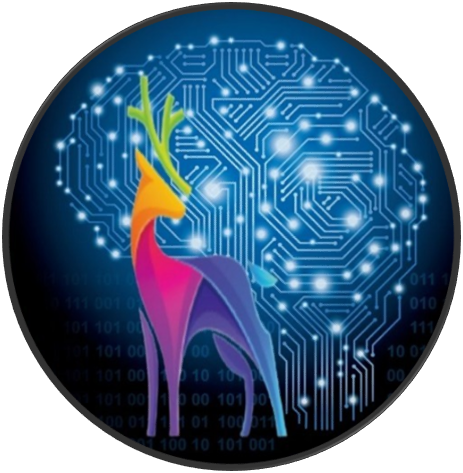
Currently, we are working to expand the classification range of animals while refining the existing classification. Additional data is being collected to improve the machine’s training, and to enhance the training process, algorithms are being developed using OpenCV to filter only significant frames from videos such as those depicting animal movement, entry, or exit. Moreover, we are adjusting different machines to accommodate various environmental scenarios and extending the range of animals on which the machine works.
Exploring biodiversity Biases using VR gaming
Yoav Ofer
Crowdsourcing is an innovative way for collecting wildlife data for biodiversity assessment. However, it comes with potential biases due to natural human tendencies. The aim of this study is to investigate the impact of such biases on the process of animal documentation For the purpose of creating a model that will allow us to normalize the collected data and use it .Methods: A 360 video of the Golan Heights was recorded, and a VR game will be created using the Unity gaming platform. Participants will be asked to observe and record sightings of animals that can be found in the area using VR glasses (Meta Quest 2) and VR controllers. Participants will be allowed to choose the animals they observe and record. Data will be collected across a range of animal species. We hope that by including observer experience we could potentially learn human recording preferences and if personal biases related to the animal’s behavior, traits or familiarity.
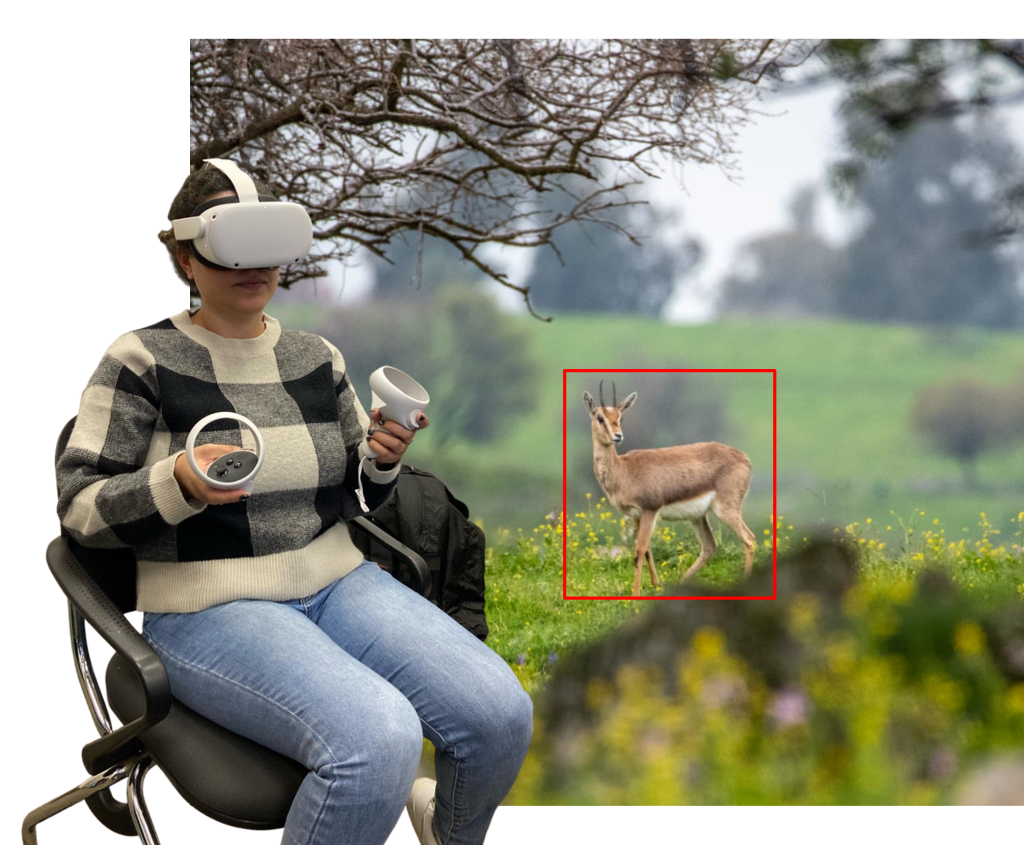
Temporal and Thematic Biases in Citizen Science Butterfly Data
Maria Nitsberg
Citizen science projects have become increasingly important for biodiversity monitoring. However, these data can be biased, which can limit their utility for research. Our research team is investigating the nature and extent of biases in butterfly biodiversity data collected through citizen science. We are using a comparative methodology to analyze data from diffrent distinct sources with varying levels of structurization. Our preliminary findings suggest that both temporal and thematic biases are present in the data from all sources. Temporal biases were most pronounced in the data from iNaturalist, which was more likely to be collected during the summer months.

Thematic biases were most pronounced in the data from Facebook, which was more likely to include observations of large and colorful butterflies. These findings suggest that temporal and thematic biases are a common problem in butterfly biodiversity data collected through citizen science. These biases can limit the utility of citizen science data for research, as they can lead to inaccurate or incomplete representations of biodiversity. Our research is providing important insights into the nature and extent of biases in butterfly biodiversity data collected through citizen science. The findings of our research can be used to improve the design and implementation of citizen science projects, in order to reduce the impact of biases on the quality of the data.
The Israel Wild Mushroom Monitoring Project: A Citizen Science Initiative
Nitsan Bar-Shmuel
The Israel Wild Mushroom Monitoring Project, a citizen science initiative launched last year, aims to generate high-quality data on the abundance and distribution of wild mushrooms in Israel using data collected by citizen scientists. The project utilizes the iNaturalist platform to engage citizens, professionals, and academics in identifying mushrooms and recording their locations. Since its inception last year, the project has successfully collected over 4,000 observations. To further improve data quality, the project is initiating a structured sampling program to provide a baseline for comparison with community data. The Israel Wild Mushroom Monitoring Project represents an innovative approach to addressing the challenges associated with monitoring wild mushrooms in Israel and provides an opportunity for citizen scientists to contribute to scientific research and environmental conservation.
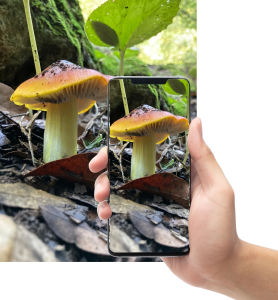
Fine-grained classification for Individual animal ID
Lior Koren
Advancements in digital photography negate the need for the physical capture of animals during population surveys. from 2017 outlines transforming Mark-recapture into Sight-Resight with the goal of animal population census. Sight-resight requires individual identification of the animals photographed. In species of unmarked featureless animals ID can be achieved by noting the sex and age of the animal photographed, thus reducing the search space for matches. This process can be a labor-intensive task.
Participants are expected to record animals that are more visible or active, or that they find more interesting or appealing. They are also expected to overlook certain animal species or behaviors that they are less familiar with or that do not fit their preconceived notions. VR gaming offers a valuable tool for investigating such biases in a controlled and standardized environment and could potential help improve the quality and reliability of crowdsourced data.
We propose a method for identifying the sex and gender using fine-grained classifying neural network. Using tracking and pose estimation models we tracked several individual boars in videos collected by Haifa University geography department and annotated the tracks by domain experts. Using images cropped from video frames we trained a fine-grained classification model. This model utilizes attention models to compare and contrast features from different classes, and enables differentiating between visually similar classes. We classified tracks in videos and compared the results to data collected by domain experts. We chose videos from Haifa area to train the fine-grained classification models, to separate them from videos collected in other areas, to avoid bias.

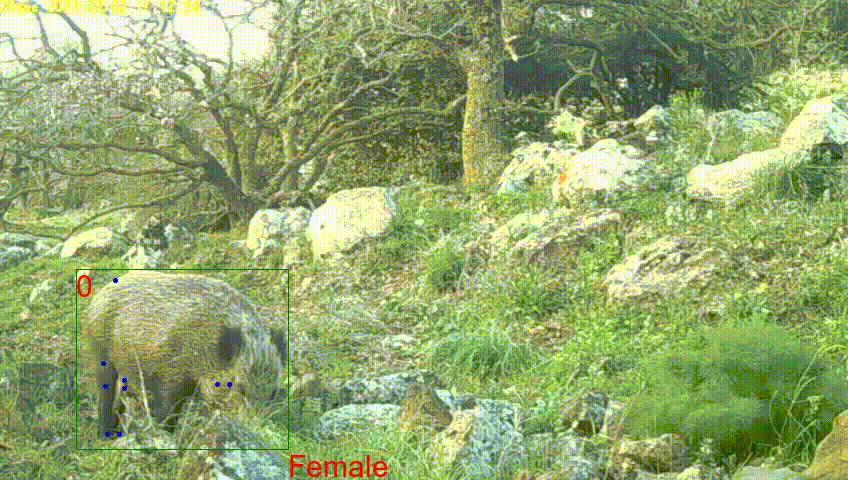
The validation set consisted of 513 images cropped from 12 videos of adult males, females and piglets collected in open areas around Israel. The validation image set results were extremely positive with over 95% accuracy differentiating piglets and adult boars. The male/female classification were slightly worse off at 89.3% accuracy.
As our full dataset consists of videos, we are expanding testing to videos that are not fully annotated, and plan on classifying full video tracks by using majority rule on track frames. This allows us to enumerate boar types in videos and compare results to the data gathered by domain experts.



